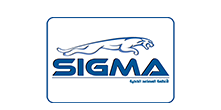
تسجيل الدخول أو إنشاء حساب
Closeالزبون العائد
أنا زبون عائد
تسجيل الدخول أو إنشاء حساب
Closeتسجيل حساب
إذا كان لديك بالفعل حساب معنا ، يرجى تسجيل الدخول على نموذج تسجيل الدخول.
لقد تم انشاء الحساب بنجاح !
شكراً على التسجيل في موقع Egyptlifts!
سيتم إعلامك عن طريق البريد الإلكتروني عندما يتم تفعيل حسابك من قبل فريق عمل الموقع.
إذا كانت لديك استفسارات عن نظام عمل الموقع، يرجى الاتصال بفريق عمل الموقع.
خروج
تم تسجيل خروجك من الحساب. يمكنك مغادرة الموقع بأمان
سلة التسوق الخاصة بك قد تم حفظها، الطلبات الموجودة في السلة سوف يتم استعادتها كلما قمت بتسجيل الدخول إلى حسابك.
كارته ميكروبروسيسور مصاعد

كارته ميكروبروسيسور مصاعد
.jpg)
في هذا المقال، سنتعرف على تفاصيل كارته ميكروبروسيسور مصاعد وكيف تساهم
تلك التكنولوجيا في تحسين تجربة المستخدمين وتقديم حلاً متقدمًا لأنظمة مصاعد.
سنتناول أيضًا مزاياها وكيف تؤثر في صناعة المصاعد بشكل عام، مع تسليط الضوء على
التقنيات والتطورات المستقبلية المرتقبة في هذا المجال. (ازاي تنسخ ريموت الأسانسير البني)
تعريف كارته ميكروبروسيسور مصاعد
كارته ميكروبروسيسور مصاعد هو جهاز متقدم يستخدم في نظام اسانسير لتنظيم
ومراقبة عمل مصعد بدقة وفعالية. يتمثل الدور الرئيسي لهذا الكارته في تحسين أداء
الأسانسير من خلال التحكم في عوامل مثل السرعة والأمان والكفاءة الطاقية. (اسانسير في مصر- صيانة اسانسير واهمية الصيانة الدورية)
يحتوي الكارته على ميكروبروسيسور صغير وقوي يقوم بمعالجة البيانات واتخاذ القرارات الفورية لضمان سلامة وسلاسة تنقل المستخدمين داخل المباني. هذه التكنولوجيا الذكية تعزز من تجربة استخدام الاسناسير وتقلل من مخاطر الحوادث وتوفر أداءًا ممتازًا وموثوقًا في مجال النقل العامودي. (الاسانسير في مصر واسعار تركيب اسانسير وصيانة المصاعد)
دور كارته ميكروبروسيسور مصاعد في عمل المصاعد
كما أشرنا سابقًا، يمكن وصف "كارته ميكروبروسيسور مصاعد" بأنه
القلب الذكي لنظام الاسانسير، وذلك لأنه يلعب دورًا بارزًا في تحسين أداء وسلامة
المصعد. تعتمد معظم الوظائف والقرارات الحيوية على هذا الكارته الذكي، والتي تشمل
ما يلي:
· تحكم في السرعة والاتجاه: يتيح كارته ميكروبروسيسور مصاعد ضبط سرعة واتجاه الحركة بدقة. هذا يسمح بتنفيذ عمليات الصعود والهبوط بسلاسة وبأقصى سرعة ممكنة مع الالتزام بالمعايير الأمانية. (المصعد وانواعو واسعارو في مصر- المصعد أفضل وسيلة راحة وأمان)
· مراقبة الحمولة: يتيح الكارته رصد الحمولة داخل المصعد وضبطها وفقًا للوزن القصوى المسموح به. هذا يمنع فحص المصعد بأنه مكتظ ويساهم في منع حوادث فرط التحميل. (تكلفة صيانة المصعد الكهربائي- هاي ليفت)
·
التفاعل مع
أنظمة السلامة: يتعامل الكارته مع مجموعة متنوعة من أنظمة السلامة مثل حساسات
الباب وأنظمة الطوارئ. في حالة حدوث أي مشكلة أو خلل، يمكن للكارته اتخاذ إجراءات
فورية للحفاظ على سلامة المستخدمين.
· تحسين الكفاءة الطاقية: يتيح الكارته تنظيم استهلاك الطاقة بشكل فعال، مما يساهم في تقليل تكاليف تشغيل المصعد والحفاظ على استدامته. (جهاز شفرة المصعد بأرخص سعر)
باختصار، يعتبر كارته ميكروبروسيسور مصاعد جزءًا حيويًا من نظام المصاعد الحديث، حيث يقوم بتحقيق توازن دقيق بين الأداء والسلامة والكفاءة الطاقية. تحول هذه التكنولوجيا الذكية الصعود والهبوط داخل المباني إلى تجربة أكثر سلاسة وأمانًا، وتسهم بشكل كبير في تحقيق أهداف النقل الحضري الحديث. (جهاز نسخ شفرات الأسانسير بسعر مميز- هاي ليفت)
مزايا كارته ميكروبروسيسور مصاعد
تُعَدُّ "كارته ميكروبروسيسور مصاعد" تكنولوجياً ذكية حديثة تقدم العديد من المزايا الهامة في مجال صناعة المصاعد. إليك بعض من هذه المزايا الرئيسية: (دليل شامل عن المصاعد)
·
زيادة الأمان:
يعتبر تحسين أمان المصاعد من أبرز المزايا التي يقدمها الكارته. فهو يتيح التحكم
الدقيق في عمل المصعد ويمنع حوادث الانصدام والتعثر عن طريق اكتشاف الأعطال واتخاذ
إجراءات فورية للحفاظ على سلامة المستخدمين.
·
زيادة
الكفاءة: يقوم الكارته بتنظيم سرعة المصعد واستهلاك الطاقة بشكل ذكي، مما يقلل من
تكاليف التشغيل ويجعل المصعد أكثر استدامة. كما يمكن أيضًا تحقيق توفير في استهلاك
الطاقة عبر تشغيل الأجزاء الأساسية فقط عند الحاجة.
· راحة المستخدمين: بفضل التحكم الدقيق في السرعة والتوقفات، يعمل الكارته على توفير تجربة أفضل للمستخدمين. المصاعد تصبح أكثر نعومة وتجنب الصدمات الغير مرغوبة أثناء الصعود والهبوط. (سعر أسانسير صغير جديد أو مستعمل)
·
إدارة
الحمولة: يمكن للكارته مراقبة الحمولة داخل المصعد وضبطها وفقًا للوزن المسموح به.
هذا يضمن أن المصعد لن يتجاوز الحمولة القصوى المسموح بها، مما يساعد في منع
الحوادث الناجمة عن فحص المصعد.
· صيانة أسهل: يوفر الكارته معلومات مفيدة حول حالة المصعد وأدائه، مما يسهل عمليات الصيانة ويقلل من توقفات المصعد غير المخطط لها. (سعر جهاز شفرة الأسانسير)
باختصار، تجمع "كارته ميكروبروسيسور مصاعد" بين الأمان والكفاءة
والراحة، مما يجعلها تكنولوجيا لا غنى عنها في عالم المصاعد الحديثة. تسهم هذه
المزايا في تحسين تجربة المستخدمين وتعزيز أداء الأنظمة الحضرية والمباني بشكل عام.
استخدامات كارته ميكروبروسيسور مصاعد
تعتبر "كارته ميكروبروسيسور مصاعد" تقنية متعددة الاستخدامات تستخدم في مجموعة متنوعة من التطبيقات ضمن صناعة المصاعد. إليك بعض الاستخدامات الرئيسية لهذه التقنية الحديثة: (سعر ريموت الأسانسير وطريقة استخدامه)
·
تحسين الأمان:
يتيح الكارته تحسين مستوى الأمان داخل المصاعد من خلال التحكم في عوامل السلامة
مثل التوقف في حالات الطوارئ والتنبيهات الصوتية والبصرية عند اكتشاف مشكلات.
· تحسين الكفاءة الطاقية: يساهم الكارته في تحسين كفاءة استهلاك الطاقة عبر تنظيم عمل المصعد وتشغيله بفعالية، مما يساهم في توفير الطاقة وتقليل التكاليف. (سعر طرمبة باب المصعد)
·
ضبط السرعة:
يمكن للكارته التحكم في سرعة المصعد بدقة، مما يسمح بضبط السرعة وفقًا لاحتياجات
المستخدمين ومتطلبات الرحلة.
· مراقبة الحمولة: يقوم الكارته برصد ومراقبة حمولة المصعد، مما يضمن عدم تجاوز الحمولة المسموح بها ويمنع حوادث فرط التحميل. (شركة للمصاعد والأسانسيرات في مصر)
·
الاتصال
بأنظمة الصيانة: يتيح الكارته توجيه إشارات وبيانات إلى أنظمة الصيانة عند اكتشاف
مشاكل أو أعطال، مما يساهم في تقليل توقفات المصعد وتحسين أداء الصيانة.
·
تنفيذ وظائف
خاصة: يمكن برمجة الكارته لأداء وظائف خاصة مثل توجيه المصعد إلى الطابق المستهدف
بسهولة عند الضغط على الأزرار المخصصة للأشخاص ذوي الاحتياجات الخاصة.
باختصار، يعزز "كارته ميكروبروسيسور مصاعد" أمان وأداء المصاعد
بشكل شامل، ويمكن تكييفه لتلبية احتياجات مختلفة داخل مجموعة متنوعة من البيئات
والتطبيقات في صناعة المصاعد.
آلية عمل كارته ميكروبروسيسور مصاعد
تعتمد آلية عمل "كارته ميكروبروسيسور مصاعد" على توظيف
ميكروبروسيسور صغير ومتقدم يعمل كوحدة تحكم رئيسية داخل نظام المصعد. تُعتبر هذه
الوحدة الدماغية الصغيرة عبارة عن حاسب صغير يتخذ قرارات سريعة استنادًا إلى
معلومات مستمرة تأتي من مجموعة متنوعة من حساسات المصعد وأجهزة الرصد.
عندما يتم تشغيل المصعد أو طلب ركوبه، يتم تفعيل الكارته، والتي تبدأ في
معالجة المعلومات الواردة من الأجهزة المختلفة. يتم تحليل هذه المعلومات لتحديد
المسار الأمثل للمصعد وضبط سرعته ومراقبة الحمولة.
بالإضافة إلى ذلك، تلعب الكارته دورًا مهمًا في مراقبة السلامة. فإذا تم
اكتشاف أي خلل أو انحراف عن المعايير الأمنية، يمكن للكارته اتخاذ إجراءات فورية
مثل إيقاف المصعد أو تحديد الأولويات في حالات الطوارئ.
باستمرارية تلقي المعلومات ومعالجتها بشكل فوري، تعمل الكارته على تحسين
أداء المصعد بشكل عام وتوفير تجربة أمان وراحة أفضل للمستخدمين. تظل هذه التقنية
الذكية تقدمًا هامًا في صناعة المصاعد وتمثل العصب الرئيسي الذي يسهم في تحقيق
أداء ممتاز وسلامة عالية.
تأثير تكنولوجيا كارته ميكروبروسيسور مصاعد على صناعة المصاعد
تعتبر تكنولوجيا "كارته ميكروبروسيسور مصاعد" إحدى التحولات
الهامة في صناعة المصاعد، حيث أحدثت تحسينات ملحوظة في أداء وسلامة هذه الأنظمة.
وقد كان لها تأثير كبير على عدة جوانب في صناعة المصاعد:
·
زيادة في
الأمان: كان لتكنولوجيا الكارته تأثير كبير على تحسين سلامة المصاعد. فهي تسمح
بمراقبة دقيقة لأداء المصعد وتفعيل إجراءات السلامة عند الحاجة، مما يقلل بشكل
كبير من حوادث السقوط أو التصادم داخل المصاعد.
·
تحسين الأداء:
تساهم الكارته في تحسين الأداء العام للمصاعد من خلال ضبط السرعة والكفاءة
الطاقية. يتيح ذلك للمصاعد العمل بسلاسة وبأقصى كفاءة، مما يؤدي إلى توفير تجارب
ركوب أفضل للمستخدمين.
KAS - كارت 2020
EGP1.00
السابق الضرائب: EGP1.00
* يعمل حتى عدد 16 دور تجميع نزول . * جميع الخصائص والمميزات (عدد المشاوير- الحمل الزائد – V.I.P - امان الشوكة – امان الكالون – خاصية جاهز - النهايات العكسية – الحريق ) خصائص ا..
حالة التوفر:متوفر
KAS - كارت انفرتر
EGP1.00
السابق الضرائب: EGP1.00
* يعمل حتى عدد 16 دور تجميع نزول .* جميع الخصائص والمميزات (عدد المشاوير- الحمل الزائد – V.I.P - امان الشوكة – امان الكالون – خاصية جاهز - النهايات العكسية – الحريق ) خصائ..
حالة التوفر:متوفر
KAS - مجموعة كاس الموفرة 2
EGP2.00
السابق الضرائب: EGP2.00
KAS - مجموعة كاس الموفرة 2 منتجات KAS الموفرة 2 تشير على الأرجح إلى تشكيلة منتجات أو نظام يتيح لك توفير الطاقة وتحسين كفاءة الطاقة في المباني أو الأماكن التي يتم استخدامها. يتميز مثل هذا النوع من المنتجات بأنها تهدف إلى الحفاظ على الطاقة وتقليل ..
حالة التوفر:متوفر
KAS - مجموعة كاس الموفرة للكابينة
EGP1.00
السابق الضرائب: EGP1.00
KAS - مجموعة كاس الموفرة للكابينة تعمل علي جميع انظمة التشغيل (دوبلكس – تريبليكس –هيدروليك – كابينة – تلبية طلب طلب - عدد 2 زر في كل دور طلوع ونزول) فقط تغيير البرمجة من البرمجة المتقدمة ،وتعمل علي جميع انواع الابواب ال..
حالة التوفر:متوفر
KAS - مجموعة كاس الموفرة للكابينة
EGP2.00
السابق الضرائب: EGP2.00
KAS - مجموعة كاس الموفرة للكابينةمجموعة كاس الموفرة للكابينة هي مؤسسة أو شركة قد تكون متخصصة في توفير خدمات الكابينة أو النقل بواسطة السيارات الخاصة، وقد تقدم هذه الخدمات في مدينة أو منطقة معينة. ليفت – أسانسير- اسانسير&nbs..
حالة التوفر:متوفر























